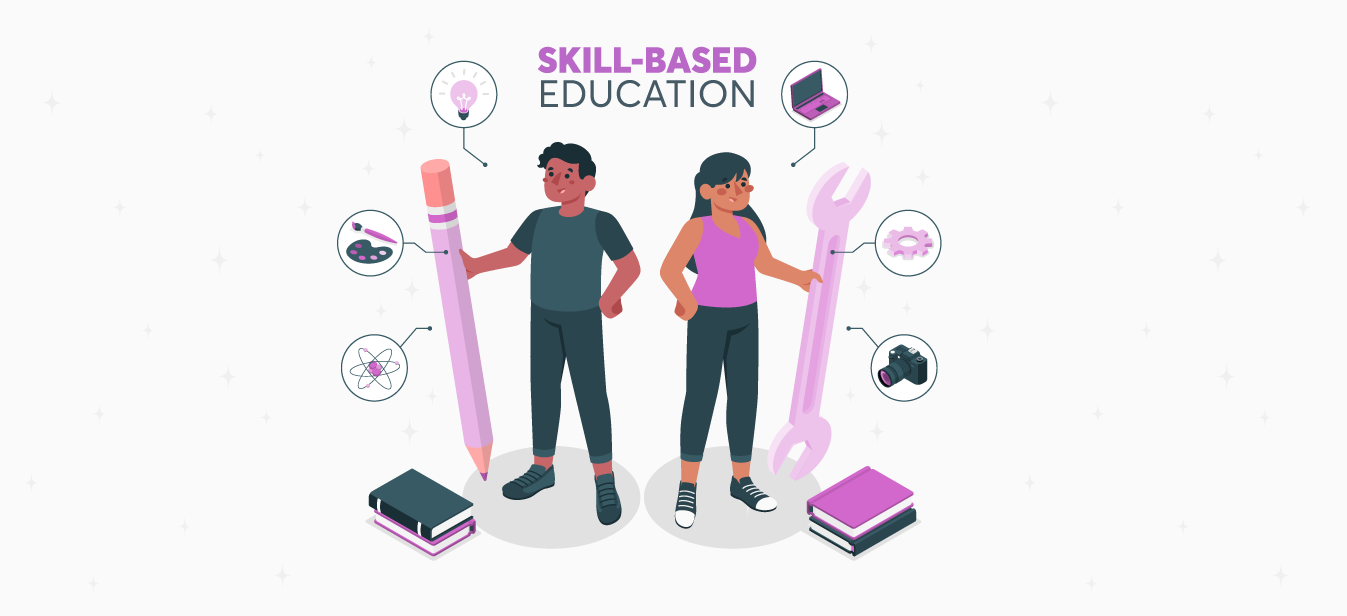Emotional literacy — the ability to recognize, understand, and manage emotions — is a skill that can be learned. And it’s increasingly important in today’s world, where social media has become a significant part of our lives. After the pandemic, students have exponentially started spending a lot of time interacting with others online on their phones and computers, which in retrospect, affects their emotional development. When children don’t have this skill set, it can impede their ability to relate well with others, understand social cues and regulate behavior so they can effectively learn in school.
While screen time isn’t necessarily bad for kids, they end up spending less time engaged in active play that helps develop social skills. That’s where emotional literacy comes in. It helps kids regulate their emotions and understand the feelings of others — both online and offline.
A child’s emotional life unfolds daily — from early attempts at gaining independence, exploring new freedom, frustration over learning new concepts to stress and anxiety as they cope with school work. And as adults, we often tell children to calm down when they’re upset, but this approach doesn’t address the underlying issue at hand — it’s not always helpful for kids to be told what to do when they’re experiencing intense feelings. So instead of telling kids what to do or how to feel, we need to teach them how to express their emotions in a healthy manner and understand others’ feelings.
Importance of Emotional Literacy
Emotional literacy is a critical component of social-emotional learning (SEL), which refers to the process by which students learn self-management skills and become aware of their own emotions and those of others. The goal is to help students develop positive relationships with others while improving academic performance, decreasing behavioral problems, and preventing mental health issues such as stress or anxiety disorders.
In addition to helping students manage their emotions better, emotional literacy builds empathy. A little self-awareness goes a long way toward creating an inclusive environment. By teaching students how to be more aware of their own emotions and how to read the emotions of others, educators can help make school a more accepting place for every student. In turn, students will learn to understand and accept others who are different.
To start teaching emotional literacy in the classroom, first, educators should model positive relationship behaviors. Students need to see that teachers care about themselves and one another to learn how to care about each other. When students see the adults around them modeling respectful relationships between different people, they learn necessary social skills that they can carry with them into their own lives.
Tracy Cardoz, the Director of Education, Square Panda India believes that children who are emotionally literate learn to express their emotions in a healthy way, and prevent many behavioral problems including low self-esteem, anxiety and low self-confidence. Students who empathize with others can build stronger relationships with their peers and teachers, which helps them succeed in school. They are also more sensitive to issues facing others, such as bullying or discrimination based on gender or disability, which can help prevent these issues from continuing in schools today.
Benefits of Teaching Emotional Literacy in School
Improved Social Skills: Students who learn to manage their emotions and use them positively will be better equipped to interact with others, cooperate on group projects, resolve conflicts and make friends. They’ll also be less likely to bully other students or get bullied themselves.
Lower Absenteeism and Dropout Rates Among at-risk Students: Learning how to regulate your emotions is significant for students with disabilities or behavioral problems, who may otherwise struggle with self-control issues that lead to frequent absences or dropping out of school altogether. Teachers often see a direct correlation between emotional well-being and academic success for such children — when they feel supported and cared about, they’re more likely to thrive academically as well as socially and vice versa.
Stronger Sense of Belonging: Students who feel connected to their peers and teachers often have a stronger sense of self-worth and confidence that helps them perform better academically. A stronger sense of belonging can also help children learn better because their self-esteem will be higher. Feeling included makes them more likely to be open to new ideas and experiences. This can lead to more creativity and excitement about learning new things. Teachers can help create this sense of connection by fostering positive relationships with their students and building trust through honest communication about sensitive issues such as family problems or problems at home.
Teachers can use the following strategies to help students develop emotional literacy:
- Help students learn how to resolve conflicts with other children using words rather than physical aggression. For example, encourage children to say “no,” walk away, or use “I” statements – “I feel angry when you do that.”
- Teachers can model empathy for others’ feelings by sharing their feelings and experiences, and giving students opportunities to practice expressing empathy for each other’s feelings.
- Encourage students to talk about their feelings. For example, after a conflict between two kids, ask them what they think one another was feeling during the conflict and how they might have felt if they were the other person. Then ask them what they could do differently next time to avoid similar disputes in the future.
- Help students understand that emotions are not right or wrong but are simply part of being human. Emotions can be positive or negative. Negative emotions may last longer than positive ones, but both are natural parts of being human.
- Teach self-management skills such as calming oneself down when angry or frustrated, delaying gratification when tempted with something one wants immediately but shouldn’t have, and developing healthy habits like eating well, exercising regularly and getting enough sleep so that their body feels good most of the time.
The Bottom Line
Schools must make emotional literacy a vital part of their curriculum. This will enhance effective communication, teamwork and social skills, which will help children manage day-to-day issues with greater ease. At Square Panda, we intend to help build emotionally literate communities where every layer of the learning ecosystem is involved in building strong, resilient learners.





